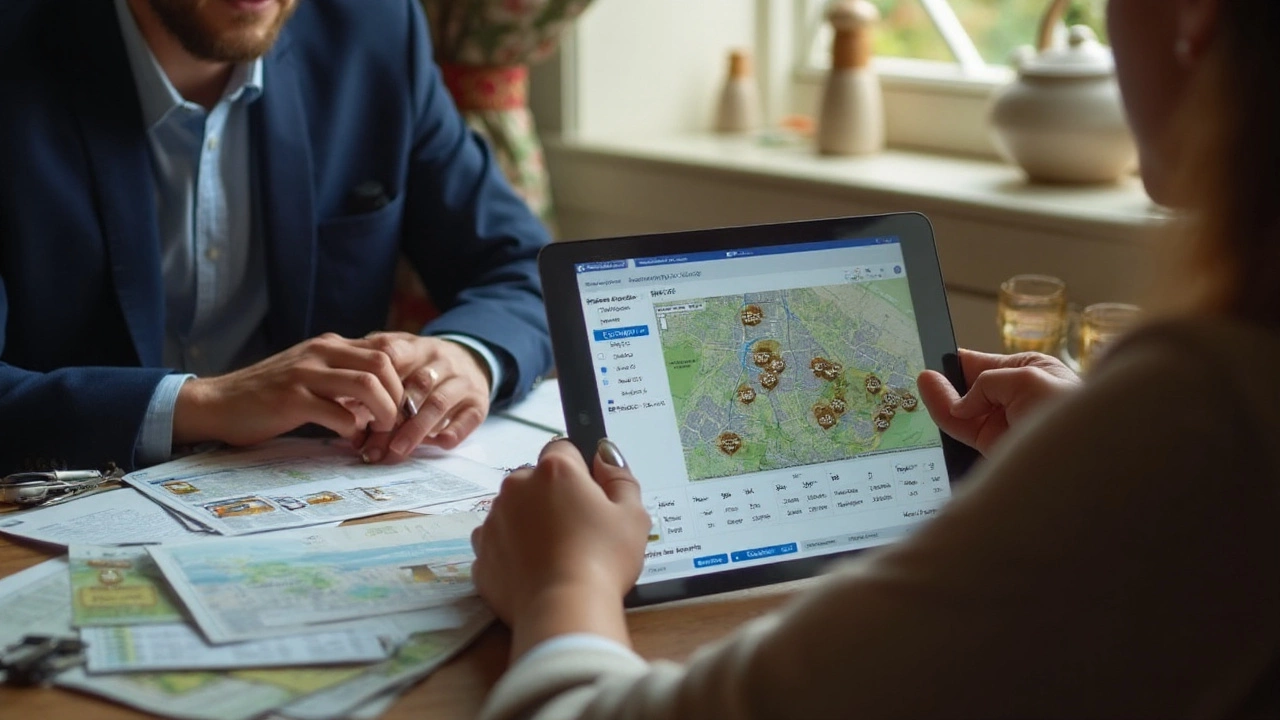Picture this: You’re eyeing your neighbor’s house on Zillow, and their asking price stings a bit. How does Zillow even come up with those numbers? Some folks swear by the Zestimate when choosing a price, while others roll their eyes and call it a shot in the dark. If you’re selling, buying, or just curious, this question can keep you guessing—just how accurate is a Zillow estimate, and can you trust it with one of the biggest assets you'll ever handle?
What Exactly Is a Zillow Estimate (Zestimate)?
Let’s get straight to the point: a Zillow Estimate, or "Zestimate," is Zillow’s take on what a house might be worth right now. It’s an online tool using tons of data points, from old sale prices to bedroom counts, all crunched by fancy algorithms. Zillow launched the Zestimate back in 2006. Today, it covers over 100 million properties across the United States.
Zillow says the Zestimate pulls info from public property records, tax data, user-submitted updates, MLS feeds, and even features like square footage or lot size. Basically, if your home ever touched paperwork or listing photos, it’s probably in their system. The Zestimate number updates multiple times a week—sometimes daily, especially in busy markets.
Still, Zillow warns—and buries this in the small print—that their Zestimate is not an official appraisal. It's more of a "starting point." Even if your cousin says his last sale matched to the dollar, plenty of people will tell you Zillow was hilariously off for their place. It boils down to the way Zestimates work: they're automated, driven by data available, and can’t peek inside your house to see that 1970s floral wallpaper or your brand-new kitchen counters.
How Does the Zestimate Algorithm Work?
Before you treat a Zestimate like gospel, peek under the hood. Zillow’s algorithm is complex—think thousands of variables whirring together, not just nearby sales. It compares homes by square footage, location, number of bedrooms, bathrooms, features, and even lot shape. The real magic? Machine learning. Basically, the system studies recent sales and "learns" patterns, aiming for closer guesses as time passes.
The more recent sales in your area, the more accurate the predictions. If your neighborhood’s had five houses sell in the last month, your Zestimate should look sharper. If your suburb hasn’t seen a sale in months, it’ll probably look more, well, fuzzy. Some features, like solar panels or a killer backyard, might go unnoticed if the data isn’t recorded or submitted.
Here’s something interesting—Zillow actually lets owners update their home facts. You just claim your address, correct the bed/bath count, fix your square footage, and theoretically, your Zestimate gets an instant refresh. But there are still blind spots: the algorithm can’t feel the sunlight in your living room, doesn’t know about a leaky roof, or see that you finished the basement yourself during lockdown. As a result, Zestimates are less accurate for homes with unique upgrades, quirks, or those in areas with sparse data.
If you’re curious about how Zillow stacks up, here’s a breakdown of their reported "median error rates" as of late 2024:
| Type | Median Error Rate |
|---|---|
| On-market homes | 1.8% |
| Off-market homes | 6.4% |
That means, for a $400,000 on-market house, the Zestimate is typically within $7,200 of the actual sale price. For homes not currently listed, the wiggle room stretches up to around $25,600. Zillow itself posts these figures transparently, but keep in mind, "median error" means half the estimates do worse than that.

Where Zestimates Shine—and Where They Don't
Now, let’s be real. A Zestimate can give you a lightning-fast ballpark when you’re house-hunting at midnight in your pajamas, or for quiet curiosity about your own place. In hot markets, in neighborhoods where lots of homes change hands and upgrades are pretty standard, it’s surprisingly close. Urban areas with polished records and a sea of data? Zestimates do best here.
Here’s the catch: the magic fades in areas where properties are unique—think big rural homes, houses with converted barns, or quirky historic bungalows. Try using it in a small town or for properties with very little turnover, and you'll spot the numbers missing the mark. Zillow won’t catch the heated garage you added two winters ago or skim through all the little customizations dividing your home from the one next door. Even homeowner-submitted corrections only go so far when the actual sales in the area don’t match your upgrades.
Stories go both ways. One seller in Austin found their Zestimate whopping $80,000 below what they sold for. Meanwhile, a friend in Chicago’s suburbs was shocked when Zillow priced their plain split-level at $40,000 over any serious buyer’s offer. Zestimates can lag behind sudden market changes too—after booming prices in 2021-2022, it took weeks (sometimes months) for Zestimates to catch up. If you've ever seen a neighbor's home drop in value on Zillow the week after a lowball sale, that's the algorithm at work—not necessarily a fair reflection of everyone's value.
Plus, Zestimates can be swayed by mistakes in their data, like misrecorded square footage or features. There’s even a cottage industry of people "Zillow stalking" exes or tweaking facts to see if they can push the number up (pro-tip: it rarely works meaningfully, but it’s fun to try).
How You Should Actually Use a Zillow Estimate
So, how should you treat the illustrious Zestimate? Think of it as a conversation starter or a first-round napkin sketch. It’s great for checking trends—like, is your neighborhood rising, flat, or falling in value? For early-stage planning, it’s handy, especially when you compare Zestimates across multiple similar houses nearby rather than fixate on a single number.
If you’re about to list your place, don’t just copy-paste your Zestimate as your sale price. Real estate agents and appraisers drill deeper. They’ll look at condition, upgrades, what features buyers in your area crave, and any recent work that makes your home pop compared to the rest. Agents often pull what they call "comparative market analyses"—handpicked sales filtered by what really matters locally. That’s more accurate than any algorithm, especially if your house isn’t identical to others next door.
Thinking of buying? Use the Zestimate as one input out of a dozen. Schedule viewings, talk with agents who know why two seemingly similar homes might still have wildly different prices, and check local sale reports. If you need financing, a lender's appraiser will have the final say anyway, and that's what the bank will care about.
And remember, updates actually do matter. If you’ve made big changes (like a full kitchen reno or adding solar panels), claim your property on Zillow and edit the details. It doesn’t solve everything, but it helps. Don't be shy about using other sites either—take Redfin or Realtor.com for a spin and compare what their estimates say. Each pulls data differently, and the spread between them can be eye-opening.
Here are a few practical tips:
- Zillow estimate accuracy isn’t one-size-fits-all. Use it as a ballpark, not a final say.
- Regularly update your home’s facts on Zillow, especially if you’ve remodeled or changed features.
- In unique or low-sales areas, be especially wary—these Zestimates can be way off.
- Don’t skip a real agent or appraisal if you’re making big decisions—Zestimates are a kick-off, not the finish line.
- Watch the median error rates, but focus on local patterns, not national promises.
It’s tempting to let an algorithm have the last word. But for most of us, it’s better to use it as a tool—not your only tool—when buying, selling, or just quietly calculating if you can finally afford that pool Bella’s been dreaming about (she totally mentioned it on her last walk, swear!).
